A 2,000-year-old ancient tomb discovered at the Tianshan archaeological site in China has left archaeologists astonished due to the numerous national treasures found within, including a gold lion weighing up to 1 ton, according to KK News.
The Southern Tianshan Railway plays a crucial role in the transportation system in the Tianshan region of China. It begins in Turfan, passing through Yuergou, Korla, and Kashgar.
Notably, 45 years ago, when railway workers were constructing the Yuergou station, they uncovered a series of ancient tombs of various sizes. Among these tombs, one stood out as particularly special. It contained countless national treasure artifacts made of gold, including a gold lion weighing up to 1 ton, which astonished the entire country and even the world.

During the construction of the railway station in Yuergou, Tianshan, archaeologists made a priceless discovery.
Priceless Treasures in the “Gold Tomb”
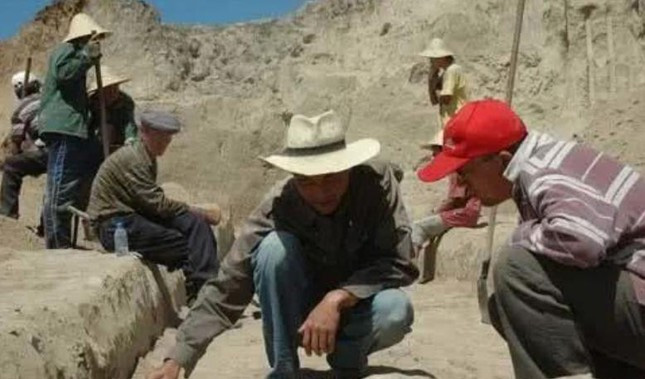
Archaeologists discovered a tomb filled with gold and invaluable treasures.
Specifically, in 1976, during the construction of the Yuergou station, railway workers unearthed many ancient tombs. Initially, they excavated over 20 large and small tombs, which included several bronze and ceramic artifacts, but none of the tombs had significant archaeological value.
The Xinjiang Institute of Cultural Relics and Archaeology reported that these ancient tombs date back to the Spring and Autumn Period through the Qin and Han Dynasties, and the tomb owners were nomadic ethnic minorities.
Later, more ancient tombs were excavated in the area, totaling over 80 tombs. Notably, among these was an extraordinarily large tomb, which contained an unprecedented amount of gold and treasures, hence it was dubbed the “Gold Tomb.”
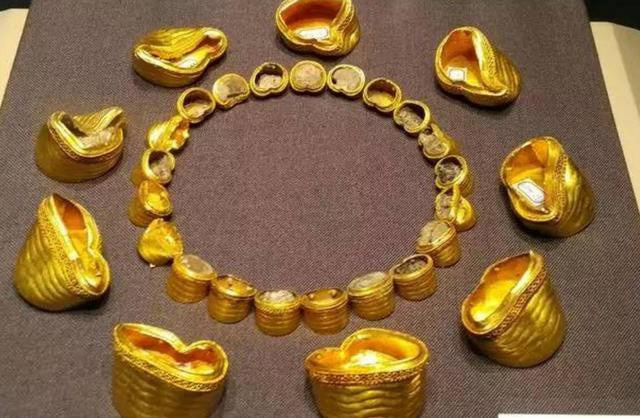
Gold artifacts discovered in the tomb.
The “Gold Tomb” is 7.1 meters deep, approximately 6.56 meters long, and 4.22 meters wide. It is a vertical tomb, lined with cobblestones, with a rough and simple design that reflects the lifestyle of ancient nomads. Eight gold plaques engraved with tiger images, four gold belts shaped like tigers, one plaque depicting a lion, and over 200 other gold decorations such as gold beads and gold flowers were found within the tomb.
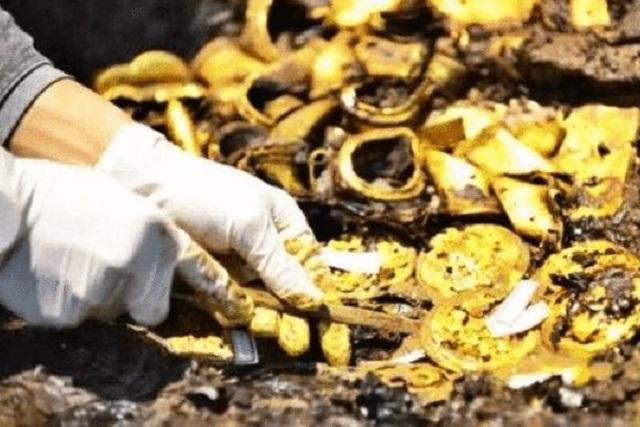
A significant amount of gold in this over 2,000-year-old tomb.

There are also gold beads.
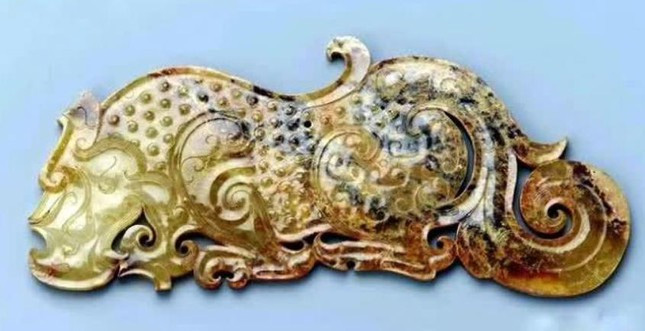
The most astonishing is the 1-ton gold lion plaque, intricately carved.
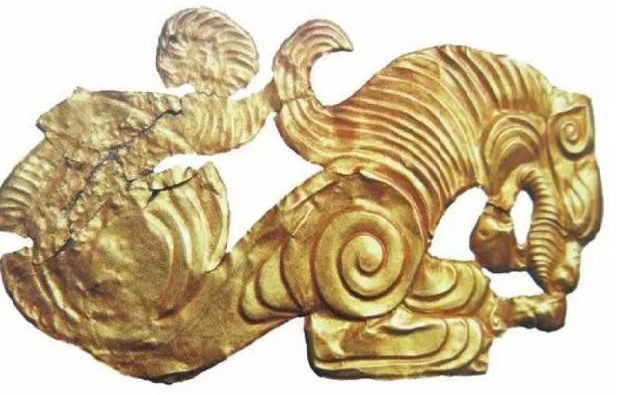
An exquisitely crafted gold plaque.
Additionally, archaeologists discovered a unique lacquer treasure within the ancient tomb. This finding is immensely significant as it helps settle the debate over whether China was capable of producing perfect lacquerware during the Warring States, Qin, and Han Dynasties.
Unfortunately, the excavation results of the “Gold Tomb” have not been made public for various special reasons. However, this has only increased public curiosity and interest in it.
The Mystery of the Tomb Owner’s Identity
The vast amount of treasures in the “Gold Tomb” has left both archaeologists and the public curious about who its owner was and what special background they had.
According to research findings from archaeologists, the tomb’s owner may have lived 2,135 years ago, was female, and was about 30 years old at the time of her death.
Notably, there is a drilled hole in the skull of the tomb’s owner. Archaeologists suggest this could be the cause of her death.
An ancient nomadic people in Northern Asia used skull drilling techniques to treat headaches. This technique was believed to relieve intracranial pressure, making it easier for those suffering from headaches, but it was very risky, as a slight mistake could lead to the patient’s death.
Archaeologists speculate that the tomb owner could be a member of the Cheshi or Huns, who were indigenous peoples with a long history in Turpan, known for their special fondness for hunting dogs, reverence for gold, and passion for collecting gold.
However, the materials and patterns found in the tomb also align with those of Xiongnu nobles, who lived in the area later and also had a preference for gold.


















































